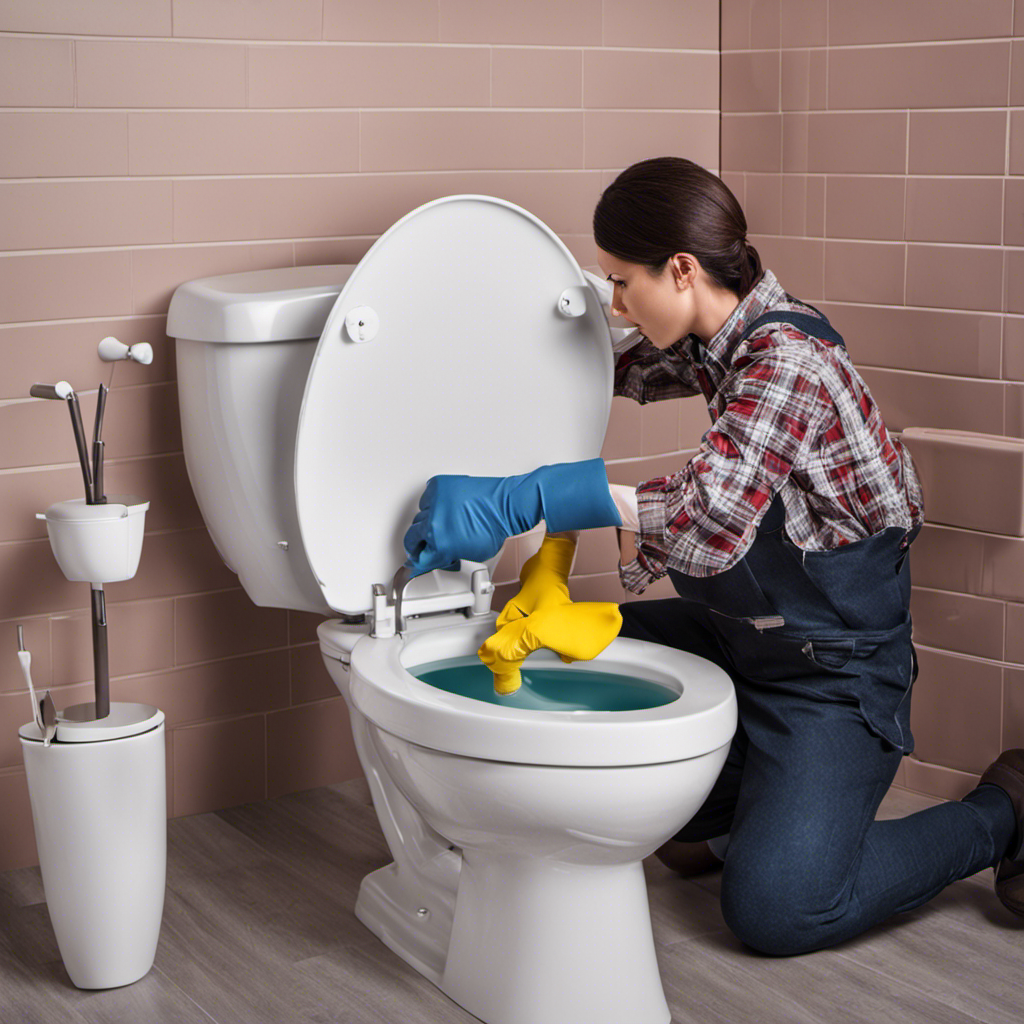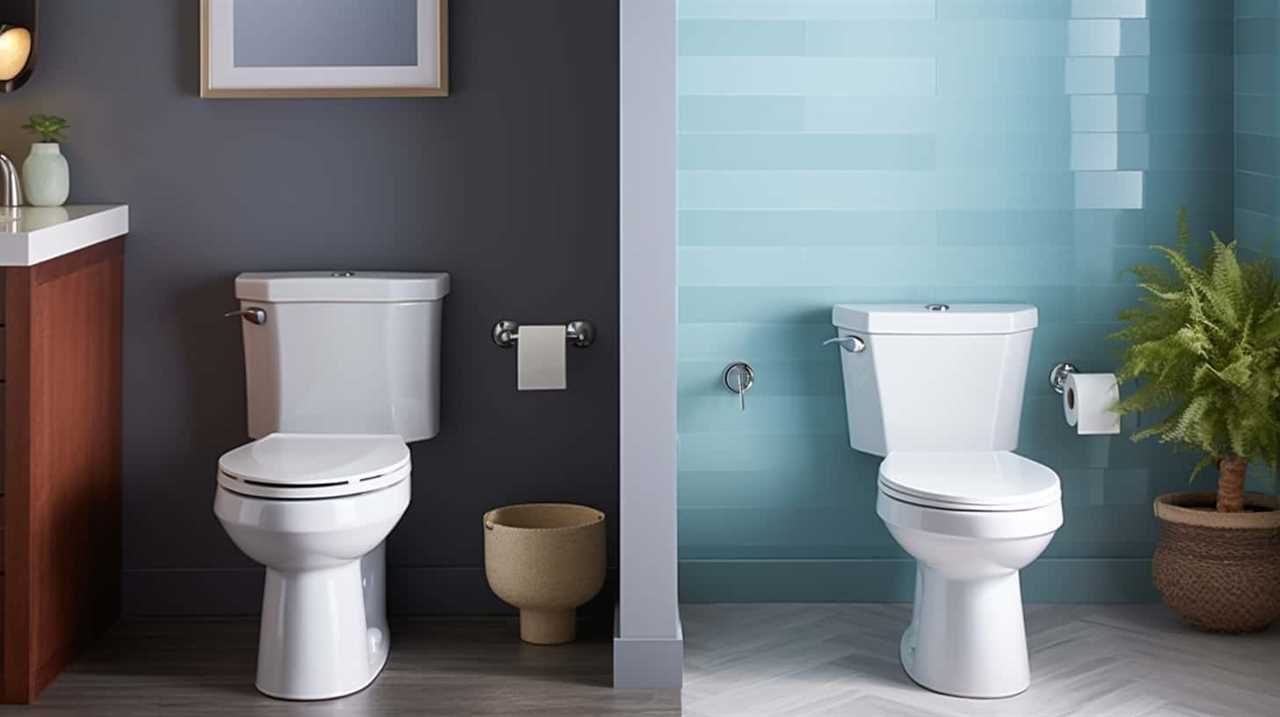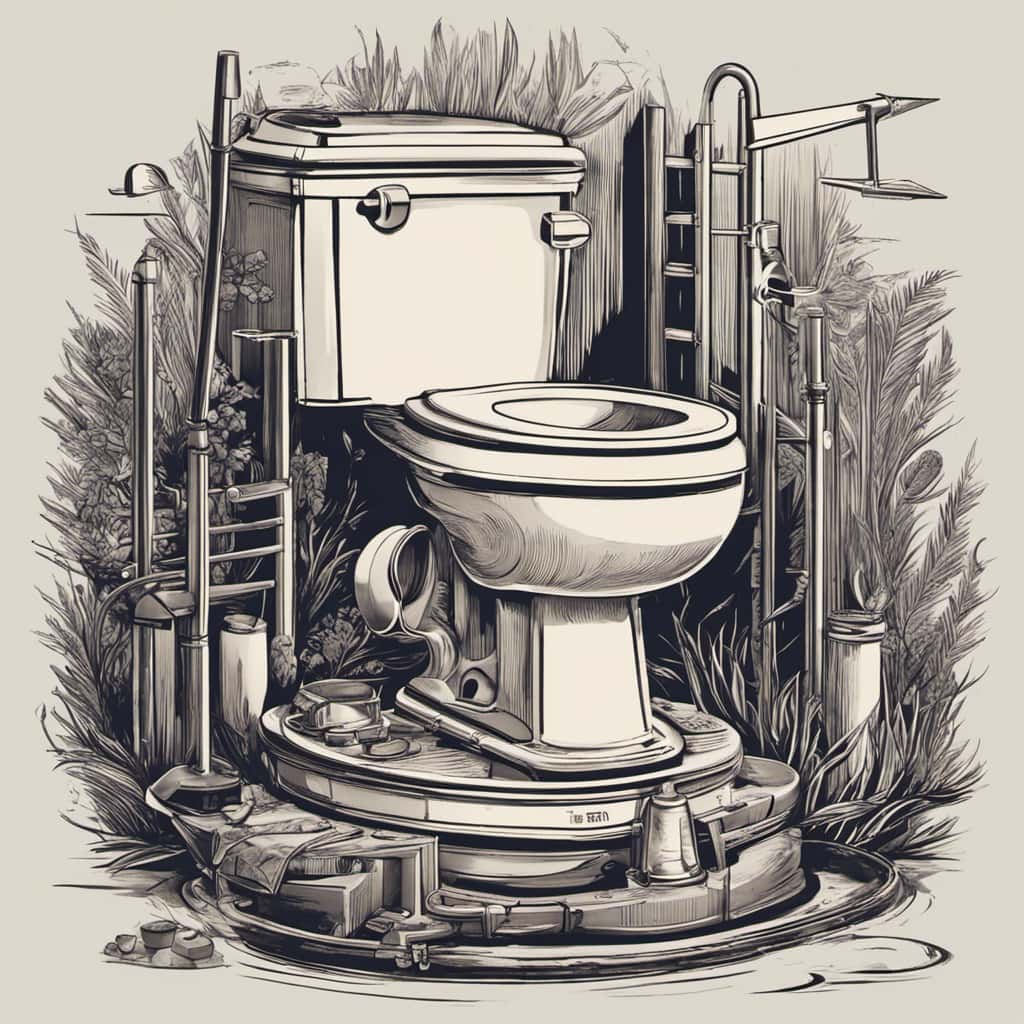Hey there! Ever found yourself in a sticky situation with a clogged toilet? Don’t worry, I’ve got you covered.
In this article, I’ll walk you through the step-by-step process of how to plunge a toilet like a pro. Trust me, I’ve dealt with my fair share of plumbing mishaps, so you can count on my experienced advice.
From the tools you’ll need to common mistakes to avoid, I’ve got all the tips and tricks to make this unpleasant task a breeze.
Let’s dive in!
Key Takeaways
- The necessary tools for plunging a toilet include a plunger with a flange, a plunger with a long handle, gloves and protective eyewear, and a bucket.
- The step-by-step guide to plunging a toilet includes putting on protective gear, inserting the plunger into the bowl, applying downward and upward pressure to create suction, and considering alternative methods if necessary.
- Common mistakes to avoid when plunging a toilet include using excessive force, using a plunger without a flange, and not filling the toilet bowl with enough water.
- Tips for effective toilet plunging include standing over the bowl, using a combination of downward and upward strokes, and seeking professional help or using alternative methods if the blockage persists.
Required Tools for Toilet Plunging
Toilet plunging requires a few tools that you’ll need to have on hand. When it comes to unclogging a stubborn toilet, having the right tools is essential.
The most important tool for the job is a plunger. But not just any plunger will do. To effectively plunge a toilet, you need to choose the right plunger. Look for a plunger with a flange, which is the rubber piece that extends from the bottom. The flange helps create a tight seal around the drain opening, allowing for maximum suction.
Additionally, a plunger with a long handle will give you better leverage and make the plunging process easier.
Step-by-Step Guide to Plunging a Toilet
First, make sure you’ve gathered all the necessary tools for the job. Plunging a toilet may seem like a simple task, but it requires the right equipment and technique to be effective. Here is a step-by-step guide to plunging a toilet:
-
Put on gloves and protective eyewear to ensure your safety.
-
Insert the plunger into the toilet bowl, making sure the rubber cup completely covers the drain hole.
-
Apply downward pressure and then pull up forcefully to create suction. Repeat this motion several times.
-
If the water level is high, use a bucket to remove excess water before plunging.
-
If traditional plunging doesn’t work, consider alternative methods such as using a toilet auger or chemical drain cleaner. However, be cautious when using chemicals and follow all safety precautions.
Common Mistakes to Avoid When Plunging a Toilet
When you’re attempting to fix a clogged drain, be sure to avoid these common mistakes that can hinder the effectiveness of your efforts.
One of the most common mistakes people make when plunging a toilet is using too much force. Contrary to popular belief, plunging with excessive force can actually cause the clog to become more compacted and difficult to remove.
Another misconception is that any plunger will do the job. It’s important to use a toilet-specific plunger with a flange, as it creates a better seal and increases the suction power.
Lastly, many people forget to fill the toilet bowl with enough water before plunging. Without enough water, the plunger won’t create the necessary pressure to dislodge the clog effectively.
Remember these tips to avoid common mistakes and ensure a successful plunge. Now, let’s move on to some tips for effective toilet plunging.
Tips for Effective Toilet Plunging
Make sure you have a toilet-specific plunger with a flange to create a better seal and increase suction power. When it comes to effective toilet plunging, here are some tips to keep in mind:
-
Position: Stand over the toilet bowl and place the plunger’s flange directly over the drain hole. Ensure a tight seal by pressing down firmly.
-
Motion: Use a combination of downward and upward strokes to create suction and dislodge the blockage. Maintain a steady rhythm and avoid excessive force that could splash water.
-
Technique: Push down with force to compress the air in the plunger, then pull up quickly to create a suction effect. Repeat this motion several times until the water starts to drain.
-
Persistence: If the blockage persists, try using a plumbing snake or seek professional help before resorting to harsh chemicals.
Troubleshooting Toilet Plunging Issues
If you encounter persistent issues while using a plunger, it might be time to troubleshoot the problem further.
As someone who has dealt with many toilet plunging issues in the past, I understand the frustration that comes with a stubborn clog.
When traditional plunging techniques fail, there are alternative methods to consider.
One effective technique is using a toilet auger, also known as a plumbing snake, to break up the blockage. This tool is inserted into the toilet and rotated to dislodge the clog.
Another option is to create a makeshift plunger using a mop or a plastic bag filled with water. By placing the mop or bag over the drain, you can create suction and potentially clear the clog.
It’s also worth noting that hot water and dish soap can sometimes help loosen a stubborn blockage. By pouring a generous amount of both into the toilet bowl and letting it sit for a few minutes, you may be able to flush away the clog.
Conclusion
Well folks, there you have it – a comprehensive guide on how to plunge a toilet like a pro! Armed with the necessary tools and knowledge, you can tackle any clogged toilet with confidence.
Remember to avoid common mistakes, follow the step-by-step guide, and implement the tips for effective plunging. With a little practice, you’ll be able to troubleshoot any toilet plunging issues that come your way.
So go ahead, be the hero of your household, and plunge away those pesky clogs.
Happy plunging!










